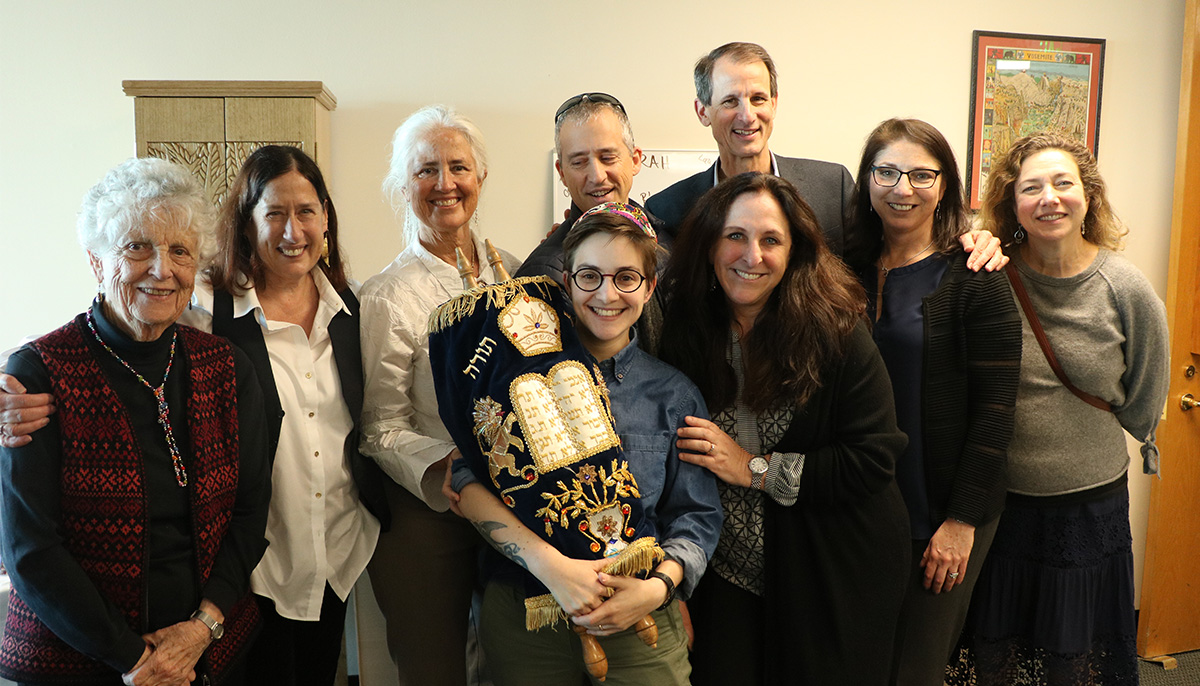Tawonga Torahs
Tawonga is beyond fortunate to be the home of two Sefer Torahs, loaned by the Memorial Scrolls Trust. Each Torah has its own unique history and use today in our community.
The Camp Tawonga Torah, MST#803
The story begins in 1939, in the tiny Bohemian village of Vodnany in what is present day Czech Republic. As the Nazis conquered the region, the Jews of Vodnany were sent to Theresienstadt and other concentration camps. In anticipation of this, they hid their Torah. Details of this history is found here .
Years ago, we heard (and re-told) a different narrative, which told of a Nazi plan to build a “Museum of an Extinct Race” to exhibit the “relics of the Jewish people they were hoping to exterminate.” This “museum” story is now considered debunked. Ultimately, some 200,000 items of Judaica were gathered in Prague, where they survived the Shoah. Included were 1,564 Torah and other scrolls that lay deteriorating until 1964, when a British philanthropist rescued them and brought them to the Westminster Synagogue in London who set up the Memorial Scrolls Trust to care for them. The Torah from Vodnany was adopted by Camp Tawonga in 1988.
Now it resides in the divine Sierra Nevada Mountains just outside Yosemite National Park. Every Friday night, it is lovingly carried from one end of camp to the other, accompanied by guitars and song-leaders, gathering the children to Shabbat. Every Saturday, we read from its ancient pages. We are in touch with something powerful, nearly magical, when reading from the spiritual tree of life while surrounded by the actual trees of life. That experience is deepened and enriched when wearing the hand-painted silk tallitot which visiting artist Nancy Katz helped our children and staff to create. We sanctify this experience when we acknowledge that at the same time that Moses received the Torah at Sinai, Native American Miwuk people were sitting around the same granite stones which surround our outdoors bimah. Reading from this Torah, in this sacred space, connects us to both of these legacies.
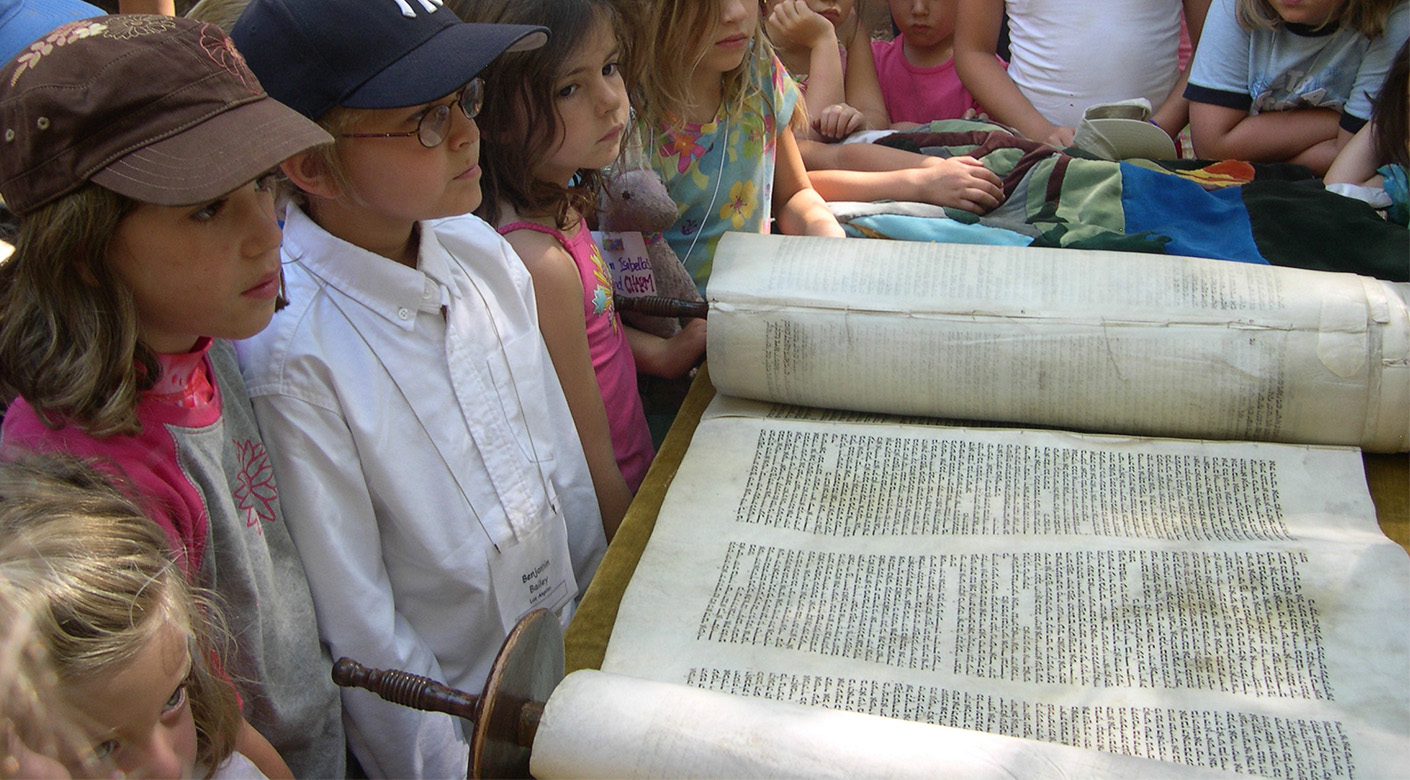
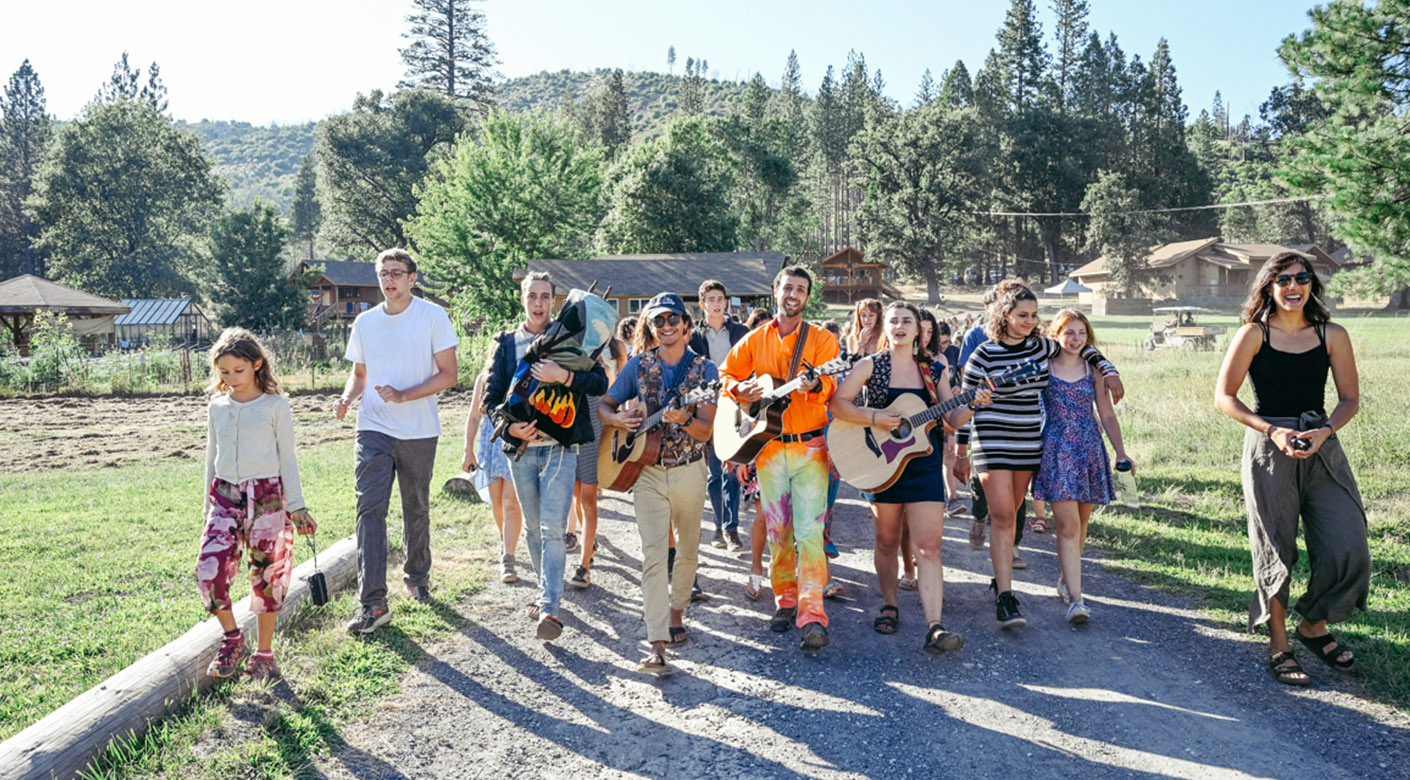
The beginning of Tawonga’s Torah begins in 1984 when there was a flood in Yosemite National Park. We received a call from Rabbi Malcolm Sparer who was President of the Board of Rabbis to see if we wanted the aron kodesh (holy ark) which had been in the little church in Yosemite Valley. The church had been used by Rabbi Joseph Leibowitz and others for occasional services for wandering and camping Jews, but the flood forced them to close.
The ark arrived at camp and we set it up in the Dining Hall. It was empty, except for a velvety cloth decorated with Jewish stars, presumably used to create a “bimah” in the Yosemite church. The ark, itself a lovely work of wood and pounded copper, stood empty in the corner of the dining hall for a few summers. Matt Biers, our program director back in 1985, committed himself to finding a Sefer Torah to fill the empty ark. (Matt later became a Wexner Fellow at HUC, author of Solomon and the Trees, and co -author of Spirit in Nature.)
After considerable searching, he discovered that the Memorial Scrolls Trust in London had a collection of Czechoslovakian Torahs which it was allocating on permanent loan to communities all over the world. He arranged for the Torah to fly from London to San Francisco, hand carried by Richard Gonski. The Torah got its own seat.
On Saturday, April 23, 1988, hundreds of campers and community members gathered for a community “Celebration of Survival” at the SFJCC to welcome the Vodnany Torah into our community. Jews from eight other local synagogues who also had Torahs that survived the Holocaust brought those Torahs to the celebration to greet our new arrival from Europe. It
mirrored beautifully the loving way that our people have always rallied to welcome “new arrivals” to the country. Two of our Board members (Renee Rothmann and Linda Levi) hand-sewed a velvet mantel for the Torah. The images on the cover include a huge tree embroidered with the Hebrew “Etz Chaim” (Tree of Life), an image of Half Dome, and behind it all, the fires of the Holocaust. That summer, the Torah, wrapped in its mantel, took its place in the Ark at camp.
Now came a big challenge–what should we do with it? Serendipitously—or b’shert—Rabbi Yitz Greenberg came to San Francisco about that time on a Center for Leadership and Learning teaching tour. Tawonga directors Ken Kramarz and Deborah Newbrun volunteered to drive him from gig to gig and—between stops—talked about ways to deepen the Jewish experience at camp. We told Rabbi Greenberg that it was our camp tradition on Shabbat to take our guitars and song-leaders to the furthest camper cabin and start serenading the kids. Like a pied piper, we’d pick up campers bunk by bunk, singing Shabbat songs until the entire camp community was strolling and singing together, heading to the dining hall for blessings and dinner.
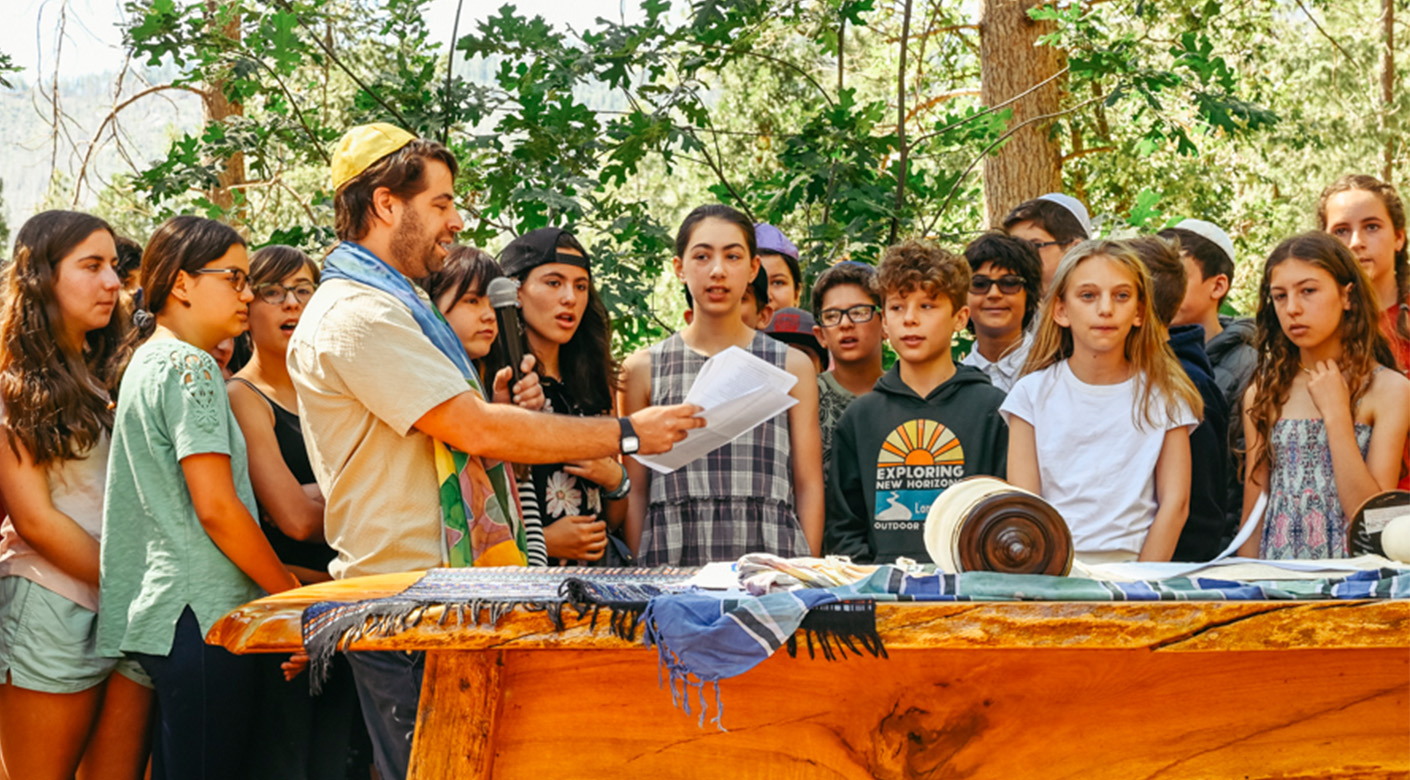

Rabbi Greenberg taught us about the Covenant of the Halves, and suggested that we carry the Sefer Torah at the front of our procession, leading the musicians and the entire camp of children and staff. In emulation of Ezra’s public reading of the Torah in the marketplace, we told
and re-told the story of the amazing journey of this scroll.
Over the years, the children at camp have deepened their relationship with this Torah as they heard us talk about the town of Vodnany, which had been home to about the same number of Jews as Tawonga.
In 2013, the Rim Fire – the largest fire in Yosemite history – burned through Tawonga. There were no children in camp, but there was still a rescue to perform: saving our Torah. The New York Daily News ran a story about this. Today, the Vodnany Torah is safe and happy in its new home at Camp Tawonga, surrounded by the beauty of nature and the songs and laughter of the children it will inspire for years to come.
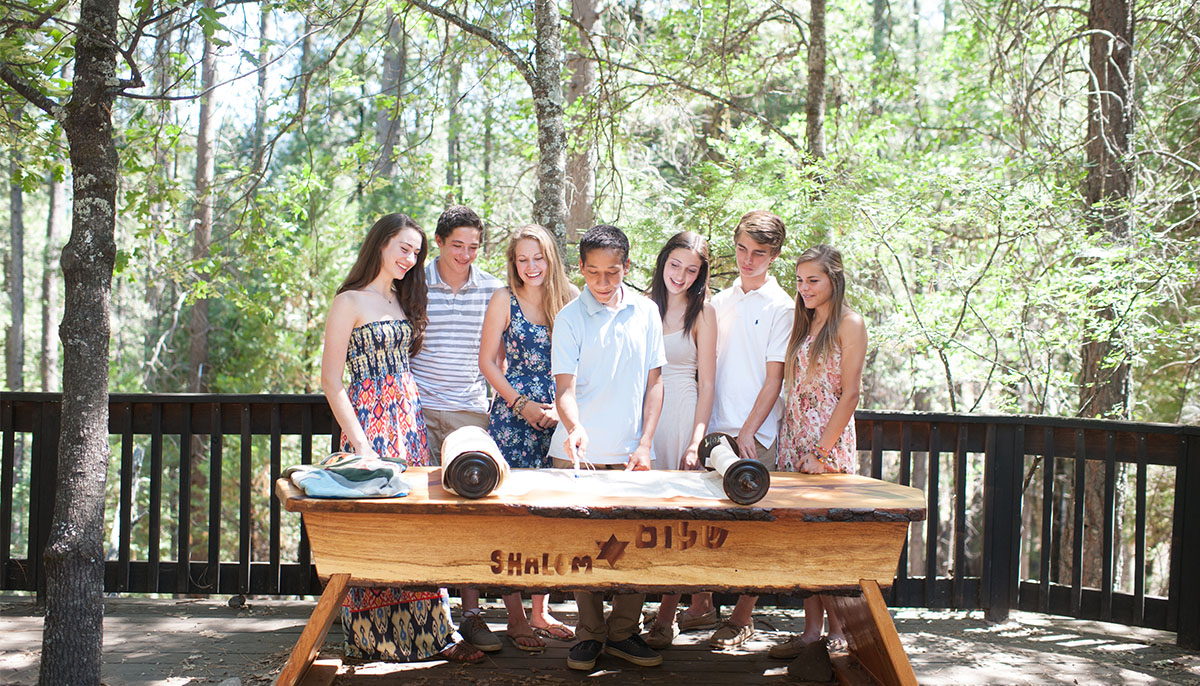
The Tawonga B’nai Mitzvah Torah, MST#122
As our Tawonga community grew to include our own Bar, Bat & B’nai Mitzvah program, we realized in 2018 that we needed another Torah for our students to read from and learn with. So we reached back out to the Memorial Scrolls Trust (MST), the agency from which we received our Torah 30 years prior, and applied for another long-term loan to serve our expanding Tawonga family here in the Bay Area.
MST#122, the technical name of our Tawonga B’nai Mitzvah Torah, comes originally from the Caslav/Golcuv-Jenikov region in what is today the Czech Republic. The scroll was written around the turn of the 20th century.
The Memorial Scrolls Trust has 12 scrolls with a provenance which translates as “was too many for a small community.” In 1850 there were some 450 communities in Bohemia and Moravia for no more than 125,000 people. The average size was less than 50 families, with some larger communities scattered throughout the region. There is no doubt that some of the scrolls that claim the Caslav/Golcuv-Jenikov provenance came from very small nearby communities for which we have no records.
Caslav and Golcuv-Jenikov are towns no further than 15 minutes apart by car. As stated in MST records, the two towns are linked and may have been identified as one place. It seems as though this Torah belonged to one of the many surrounded towns and was eventually centralized in Caslav/Golcuv-Jenikov during WWII.
After finding its way to the MST, this Torah, in 1967, was allocated to the Egware Reform Synagogue in London. In 2018, the Hendon Reform synagogue merged with Edgware to form the Edgware and Hendon Reform Synagogue which has the largest progressive community in Europe, hosting some 4000 members.
The Rabbis of both Edgware and Hendon are the children of Czech survivors. Rabbi Katz’s family came from Klatovy, as did the other scroll allocated to them. When the communities merged it was decided only one Czech scroll was required so due to the Klatovy scroll’s family connection, they returned MST#122, which is now our Bar & Bat Mitzvah Program Torah!
The mantle the Torah wears today was made in 1967 by the Edgware community.
And now, as our Tawonga community is growing and in need of another Torah, MST#122 finds itself home with us, here in San Francisco, ready to meet our community and continue it’s story.
